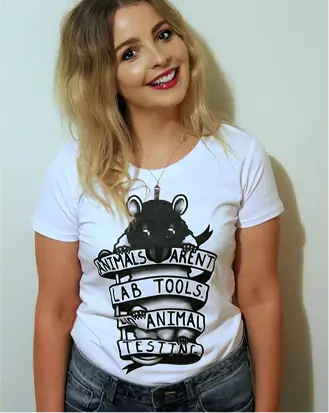Dogs have been used for science in NZ in a variety of ways, including both non-harmful and cruel methods. People are understandably upset by invasive experiments. Companion Animals NZ reported 31% of NZ households include dogs, with most of them stating companionship, love and affection as reasons to getting dogs.1 Research has repeatedly shown the strong bond between dogs and their person and more than once equated it to the bond between parent and child.2,3,4
You can actually register your dog for (likely non-harmful) research at the University of Auckland.5 And Massey University has a Working Dog Centre to do research specifically into genetics and health issues of dogs who are used for work.6
For example, dogs in NZ have been used for:
- testing insecticides, pesticides and other toxins
- attempting to model human diseases and conditions
- measuring the safety of food and ingredients
- testing pain relief
- researching disease detection
- researching nutrition and how it affects biological functions and food preferences
- testing new treatments for skin infections
- studying performance, nutrition and underlying causes of disease in working dogs as a vital part of the animal agriculture sector (in 2009, there were 150,000 working dogs in NZ)
- researching fitness and training regimes in police dogs and training dog handlers
- teaching vet and vet nurse students basic concepts like animal handling and basic clinical/husbandry skills.
Places that use dogs for science in NZ include private companies, universities, and polytechnics.
Dogs used for science in NZ are sourced from breeding facilities, farms, city council pounds and other public sources.*
*According to the Ministry for Primary Industries, public sources include: Public donations, animals obtained from a pound, a pet shop or other public sources. This includes companion animals who are used for the duration of the exercise (e.g. veterinary nurse training).
Discover real-life examples of how dogs have been used in NZ below!
- https://www.companionanimals.nz/2024-nz-pet-data-report
- https://psycnet.apa.org/doi/10.1037/0735-7036.112.3.219 (1998)
- https://doi.org/10.1016/j.cpnec.2021.100071 (2021)
- https://doi.org/10.1027/1016-9040/a000552 (2025)
- https://clevercaninelab.auckland.ac.nz/research/
- https://www.massey.ac.nz/about/colleges-schools-and-institutes/college-of-sciences/our-research/research-projects-and-groups/working-dog-centre
Testing a “Kiwiball” to teach kiwi aversion to dogs (2014)
Dogs were exposed to a device mimicking a kiwi bird, getting an electric shock upon touching it. The learning effect was tested several weeks later.
Testing a morphine alternative for pain
Dogs undergoing castration were treated with different pain relief and their pain response was measured. During surgery, EEG was measured to see differences in response to the process. After surgery, the pain level was determined through a behavioural assessment several times.
Studying selenium metabolism
Cats and dogs were fed diets with different selenium supplementation for three weeks in individual metabolic chambers. A liver biopsy was taken under anaesthesia.
Studying selenium metabolism
Animals were fed diets with different selenium supplementation for three weeks in individual metabolic chambers. A liver biopsy was taken under anaesthesia.
Evaluating the efficiency of kiwi aversion training
Dogs who had experienced either none, one or two times of kiwi aversion training with shock collars were observed near a caged live kiwi.
Testing treatment of a neurodegenerative disease
Dogs with Mucopolysaccharidosis (MPS IIIA) received medication, either from birth or 12 weeks to 23 weeks of age. One group received a placebo. Drugs were given under anaesthesia, either as injections into the vein or close to the brain. At 23 weeks old, all puppies were killed and their brains removed.
Testing a “Kiwiball” to teach kiwi aversion to dogs (2010)
Dogs were exposed to a device mimicking a kiwi bird, getting an electric shock upon touching it. The learning effect was tested several weeks later.
Testing new toxin against stoats and wild pets
Dogs, cats and stoats were fed different versions of toxic bait. Symptoms and time of death were monitored. Four dogs and two cats survived, but their fate is not stated.
Trying out genetically sick dogs as models for human disease
Dogs with Mucopolysaccharidosis (MPS) IIIA were bred within an experimental colony. As part of characterizing them as a model for testing, the dogs were killed for dissection.
Testing a pesticide as dog poison
Pound dogs were fed poison in different concentrations and different bait. More than half died within 4 hours.





